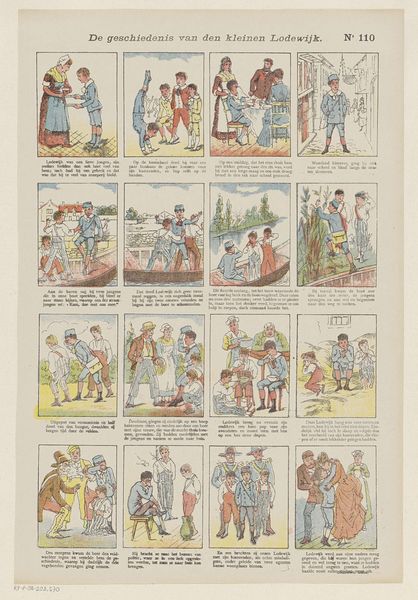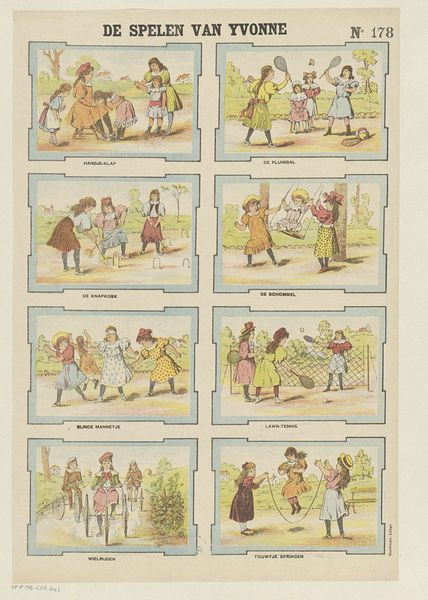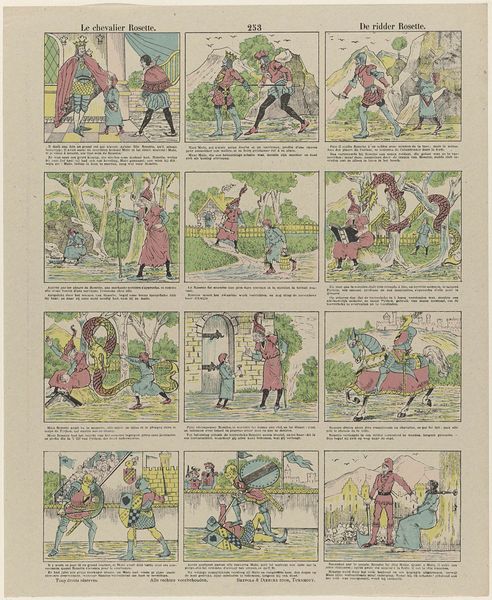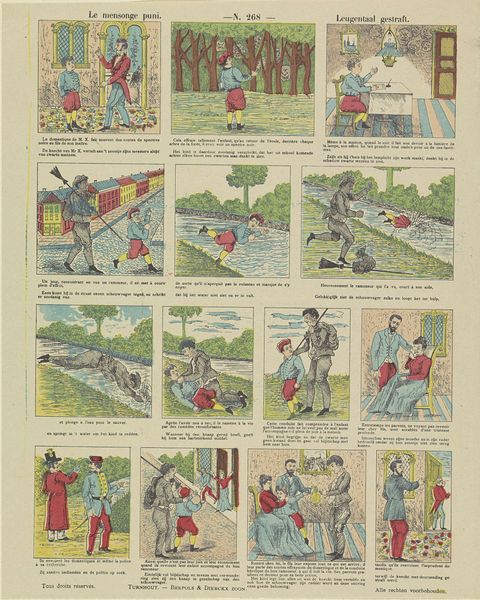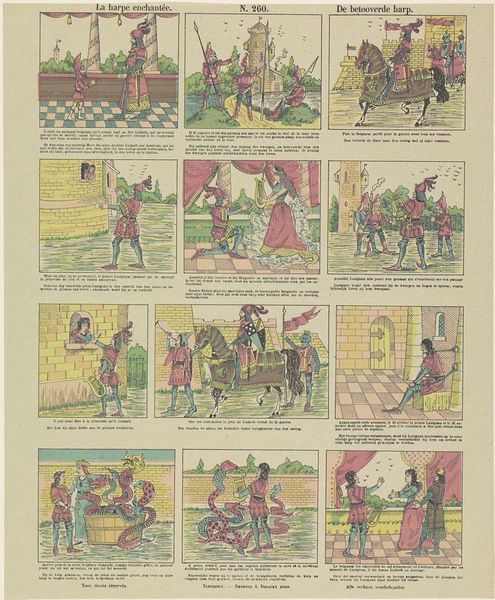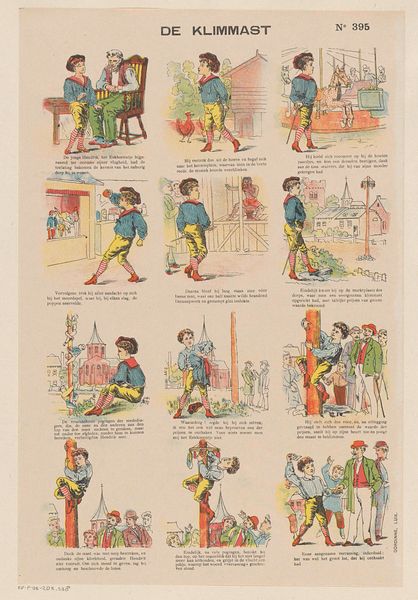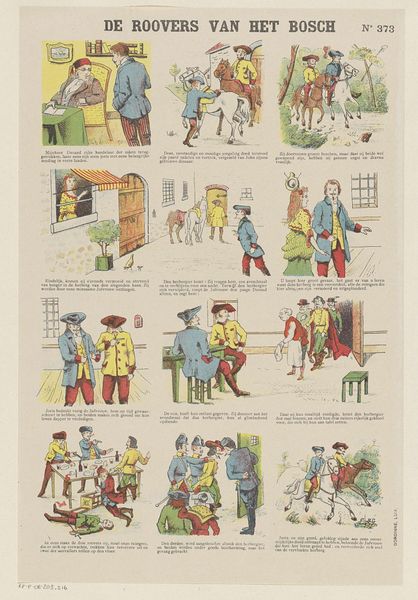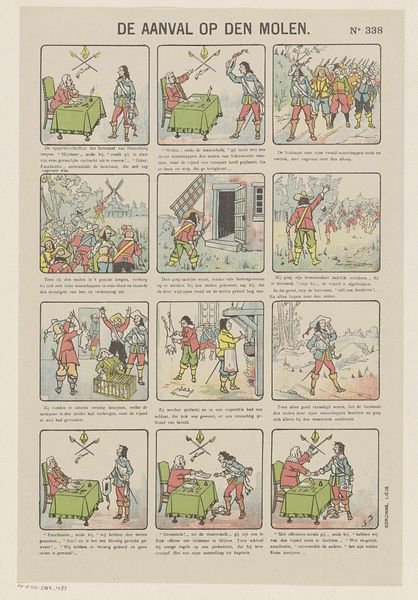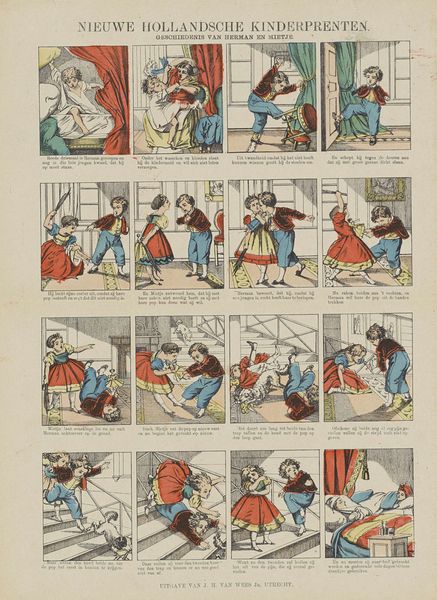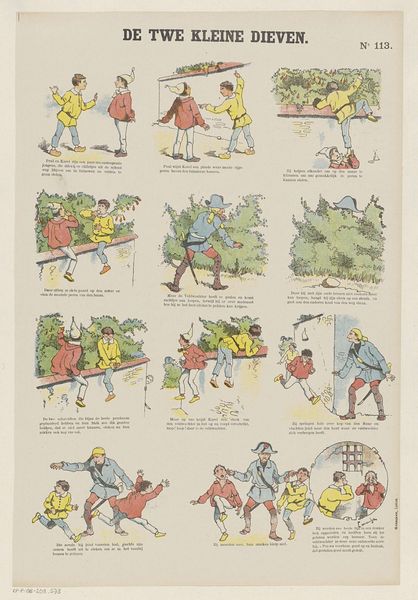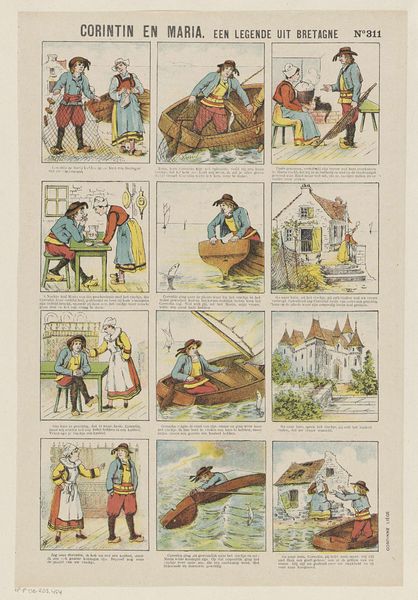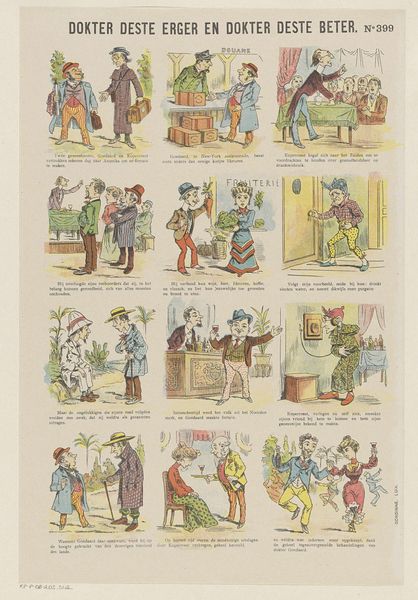
#
comic strip sketch
#
narrative-art
#
comic strip
# print
#
folk-art
#
comic
#
genre-painting
Dimensions: height 400 mm, width 269 mm
Copyright: Rijks Museum: Open Domain
Curator: I find myself strangely drawn to this little print—so compact and brimming with visual energy. It's called "De Weerwolf," and while the date range is quite broad, 1894 to 1959, it gives us a glimpse into the narrative whimsy of its creator, Monogrammist G.J. Editor: "Whimsy" is the right word! The layout resembles a comic strip, a series of little windows into some evolving situation. Yet the style itself has a storybook quaintness to it. A little unsettling but not frightening... is this truly about a werewolf? Curator: It’s all in the visuals, isn't it? Notice the consistent motif of the central figure—a man with a rather large pack, interacting with different villagers. Each scene reveals a little more, leading to, if I am not mistaken, an "unmasking". He offers the drink that, I am gathering, makes them become a "werewolf" in their nature Editor: Absolutely, it seems the heavy pack transforms into something almost… grotesque as we move further down the visual sequence. Those thick black lines give the last frames a very striking, almost crude feel to the emotional shifts there! What did these comics originally tell Dutch society in its time, I wonder? Curator: That shift you're picking up on may have been what caused people to pause and read during that period; though ostensibly for children, these were likely understood on a different level as the country endured profound societal and global change at a rate that could itself feel somewhat "werewolfian." They carry the weight of those anxieties. Editor: Yes, in many folktales and folk art across Europe and parts of the Americas, the theme of the werewolf becomes a dark and terrible marker for societal disruptions. In times when one needs a symbolic conduit for uncontrollable change or societal shifts and their anxiety inducing moments. Curator: The final images speak for themselves in a way that supersedes language even still. You can almost feel that internal, base struggle he induces come into being among that close knit group of villagers Editor: That final image truly encapsulates the theme: even a single member that gives himself to that destructive impulse causes absolute division within. Thank you for sharing your own personal view on these images and thoughts.
Comments
No comments
Be the first to comment and join the conversation on the ultimate creative platform.
